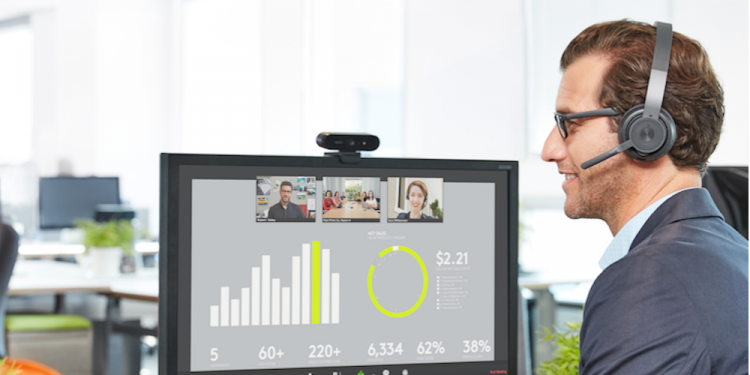Much has been written about the cost of unproductive meetings. While compelling, they do not tell the whole story. Some of the “unproductive” time spent in meetings is actually quite important. With virtual work connectivity, and video-conferencing becoming so indispensable in the “New Normal” age, here, we bring you – for a change – the unrealized connectivity aspect- from Varun Nair, B2B Product Head-India & SWA, Logitech Electronics. Read on, and value the connectivity.
………………………………………..
 Meetings are inherently social – and this aspect of meetings is often undervalued. Social connection is a vital part of work life for all employees. Healthy social connections also deliver benefits for the business or larger organization, in part by fostering employee engagement and loyalty.
Meetings are inherently social – and this aspect of meetings is often undervalued. Social connection is a vital part of work life for all employees. Healthy social connections also deliver benefits for the business or larger organization, in part by fostering employee engagement and loyalty.
Unfortunately, the social aspect of office work has been severely tested by the coronavirus pandemic and resulting lockdown in many businesses. But there is good news.
By taking advantage of the capabilities of video conferencing, meeting organizers can revitalize social connection during this time of social distancing. There is further evidence that video conferencing not only improves overall meeting effectiveness but could have positive downstream effects such as improving productivity and employee engagement.
Why Social Connection is so Important in the Workplace
The desire to feel a sense of belonging is innate to humans, and a sense of belonging at work can boost our happiness and our willingness to contribute to the organization’s success. For both employees and the businesses they work for, healthy social connection at work provides a number of benefits:
- Greater creativity and problem solving

- Higher productivity
- Increased loyalty
- Higher employee retention rates
How Video Conferencing Restores Social Connection
Lack of social connection is a problem during a period of social distancing and self-isolation, when impromptu gatherings and hallway conversations are not taking place. Fortunately for employees and organizations, academic research indicates that video conferencing can be an effective replacement for those informal conversations and restore the sense of belonging and connection that people miss during social distancing.
Video conferencing offers a great deal of “informational value” through nonverbal cues as well as verbal dialog. These nonverbal cues – a sympathetic look, a simple hand gesture – are vital to creating social connection.1 In fact, it’s possible that during this period of self-quarantine, video conferencing may actually increase social connection in ways that weren’t widely considered before the pandemic.
Key Takeaways for Meeting Organizers and IT Managers
 Understanding the importance of social connection, how it’s formed, and how video conferencing can restore it for remote workers provides us with insights and recommendations for meeting organizers and IT managers.
Understanding the importance of social connection, how it’s formed, and how video conferencing can restore it for remote workers provides us with insights and recommendations for meeting organizers and IT managers.
- Make time for “pre-meeting talk: ”By relaxing formalities at the beginning of a meeting while encouraging people to arrive promptly, meeting organizers can purposefully make time for small talk that creates social connection
- Set aside time for unscheduled or unstructured meetings: Impromptu meetings, like hallway conversations, are sometimes where the most important work is done
- Make meetings shorter: Keeping meetings short and crisp allows you to gain the benefits of social connection while reducing meeting fatigue, an all-too-common symptom of this quarantine period
- Expect disruptions: Set ground rules and norms that disruptions are okay. Interruptions by children and pets are probably unavoidable now and show that we’re all human after all
- Celebrate individuality: The window we have into our colleagues’ lives can help us get to know each other a little better
- Take advantage of video conferencing tools: Purpose-built headsets and webcams like the ones provided by Logitech strengthen the benefits of video conferencing by making it easier to see and hear everything clearly. Being seen and heard is a necessary requirement for healthy social connection
We can take the lessons we’ve learned during this pandemic once “stay at home” orders are lifted and some employees begin returning to the office. We can make video conferencing a staple of future meetings, and use it to build a greater understanding and empathy for each other.
(Varun Nair can be reached at vnair1@logitech.com )






















